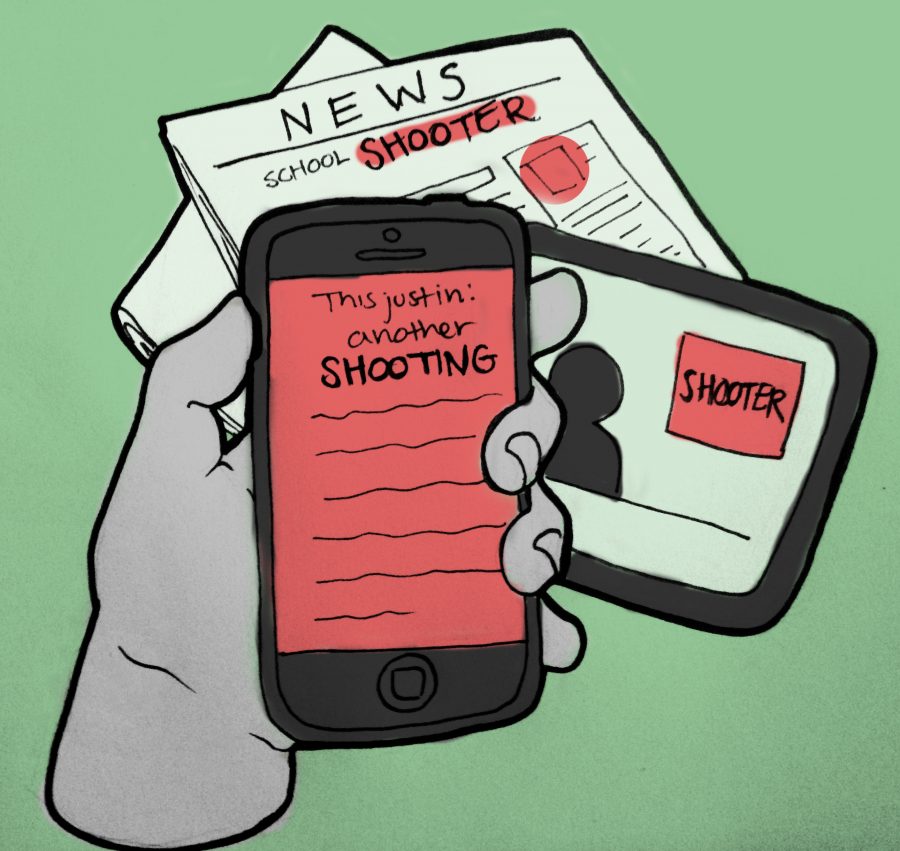The man responsible for the mass shooting in Sutherland Springs last Sunday lived 15.1 miles from my house. National news broadcasted this information hours after the massacre, flying helicopters overhead for an aerial view of his home as newscasters tried to understand: Why would someone do something like this?
As the week progressed, news channels released more and more information about the shooter: his name, his age, his face and the guns he had used to carry out the killing. The victims of this man’s actions, however, were relegated to a number — a statistic for America to rank alongside other massacres in recent memory.
This is not and cannot be the new normal. Not only does this kind of reporting cement the act of mass murder into American culture, it glorifies the shooter and likely emboldens
potential killers.
In a 2015 study from Arizona State University, researchers found that mass shootings often appear in bunches and that media exposure can act as a medium for infecting possible murderers, not unlike a contagion. Sherry Towers, the ASU paper’s main author, considers the sensationalist content of television and radio coverage of shootings to be almost like an advertisement for the malicious.
Forensic psychiatrist Dr. Park Dietz admits that the “happy and well-adjusted” aren’t going to commit mass murder because they saw it on the news, but there are those already at risk in any news audience. “The more we provoke that segment of the audience in ways that predictably move them to action, the more we continue this lineage of mass murder,” said Dietz in a 2015 interview. “… Every time we have intense saturation coverage of a mass murder, we expect to see one or two more within a week.”
Following the Virginia Tech massacre, both Dietz, in a 2009 BBC interview, and the American Psychiatric Association put forward a set of guidelines the media could follow to prevent copycatting: Don’t show the killer’s face or incessantly repeat his name or any of his manifestos or grievances. Report the facts soberly, only treating it as urgent if there is still a clear and present danger.
Most notably, the guidelines insist that when there must be coverage, lead with the victims’ stories at length instead of stories of the shooter. Of all the grievances held against the media’s approach to these stories, this seems to be the one they can’t get a grip on.
For every story the news tells about a country music fan using a bump stock to kill dozens or a man attending a fall festival before unloading into a church, there isn’t a story about Joann Ward, who died alongside two of her young daughters, Emily and Brooke, while trying to protect them and their siblings. There isn’t a headline about Richard and Theresa Rodriguez, who liked to care for their garden beds when not in church. The story of Sutherland Springs is actually about a girl aspiring to be a nurse and a pastor’s daughter and a mother expecting her sixth child.
Media outlets must understand the balance between the public’s right to know and the ethical responsibility necessitated by the powerful role the media plays in influencing people’s thoughts and actions. They might not understand why someone would do something like this, but if they continue to portray shooters as they do, they’ll find the reason may be themselves.
Kunz is an English freshman from New Braunfels.





















